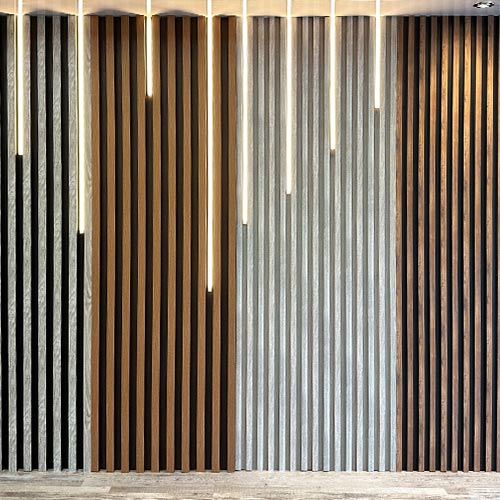DIY uPVC Panel Installation: Your Step-by-Step Guide
Transforming your space with uPVC (unplasticized polyvinyl chloride) panels can be an exciting and cost-effective DIY project. Whether you’re looking to revamp your bathroom, kitchen, or even your entire interior, uPVC panels offer an elegant and practical solution. In this step-by-step guide, we’ll walk you through the DIY uPVC panel installation process, empowering you to upgrade your space with confidence and ease.
Tools and Materials for DIY uPVC
1. uPVC Panels
Begin by choosing the uPVC panels that best suit your design vision and space requirements. Measure the area accurately to determine the quantity needed.
2. Adhesive or Mounting Clips : DIY uPVC
Depending on your preferences and the type of uPVC panels you’ve selected, you can use adhesive or mounting clips for installation.
3. Measuring Tape and Level
Accurate measurements are essential for a seamless installation. A level ensures that your panels are perfectly straight.
4. Saw or Utility Knife
You’ll need a saw or utility knife for cutting the panels to fit corners or edges accurately.
5. Caulk and Caulking Gun
Caulk helps seal gaps and edges for a polished finish.
6. Screwdriver (if using mounting clips) : DIY uPVC
If you opt for mounting clips, you’ll need a screwdriver for secure attachment.
Step-by-Step DIY uPVC Installation
1. Preparation
Start by ensuring that the wall or surface where you’ll install the uPVC panels is clean, dry, and smooth. Remove any existing fixtures, such as outlets or switches, and patch any holes or imperfections.
2. Measure and Cut
Measure and mark the dimensions for your uPVC panels accurately. Use a saw or utility knife to cut them to the desired size. Be sure to account for any outlets or fixtures on the wall.
3. Apply Adhesive or Mounting Clips
Depending on your chosen installation method, apply adhesive evenly to the back of the uPVC panel or attach mounting clips to the wall. Follow the manufacturer’s instructions for adhesive application.
4. Install the Panels
Carefully position the uPVC panel against the wall, ensuring it aligns with the level line. Press firmly to secure it in place. If using mounting clips, affix the panel to the clips securely.
5. Repeat the Process
Continue measuring, cutting, and installing uPVC panels, working row by row, until you cover the entire area.
6. Seal Edges and Gaps
Use caulk to seal any gaps or edges between the uPVC panels and adjacent surfaces. Smooth the caulk for a seamless finish.
7. Reattach Fixtures
Once the caulk is dry, reattach outlets, switches, or any fixtures you removed earlier.
8. Finishing Touches
Inspect the installation for any imperfections or gaps and make any necessary touch-ups or adjustments.
uPVC panels are unplasticized polyvinyl chloride sheets known for their durability and ease of installation. They are popular for DIY projects due to their affordability and versatility.
Essential tools and materials include uPVC panels, adhesive or mounting clips, measuring tape, a level, a saw or utility knife, caulk, a caulking gun, and a screwdriver (if using mounting clips).
Yes, uPVC panels are water-resistant and are suitable for wet areas. They are often used to enhance the aesthetics of bathrooms and kitchens.
Prepare the surface by ensuring it is clean, dry, and smooth. Remove any fixtures, patch holes, and make sure it’s level before installation.
The choice between adhesive and mounting clips depends on your preferences and the type of uPVC panels you have. Adhesive is a more straightforward option, while mounting clips allow for easier removal and reinstallation.
uPVC panel installation is considered a beginner-friendly DIY project. Basic measuring and cutting skills, along with attention to detail, are all you need for a successful installation.
Yes, uPVC panels can often be installed over existing surfaces. Ensure that the existing surface is clean, dry, and free of any loose material before installation.
Measure and mark the panel to accommodate these obstacles accurately. Use a saw or utility knife to make precise cuts, ensuring a snug fit around outlets and switches.
Achieve a seamless finish by using caulk to seal gaps or edges between panels and adjacent surfaces. Smooth the caulk for a polished look.
uPVC panels are relatively low-maintenance. Regular cleaning with a mild detergent and soft cloth is usually sufficient to keep them looking their best. Avoid abrasive cleaners that could damage the surface.
DIY uPVC panel installation is a rewarding and budget-friendly way to transform your space. With the right tools, materials, and a methodical approach, you can achieve professional-looking results. Whether you’re enhancing a kitchen, bathroom, or any interior area, uPVC panels provide a stylish and practical solution. Embrace the DIY spirit and enjoy the satisfaction of a job well done as you revamp your space with uPVC elegance.











